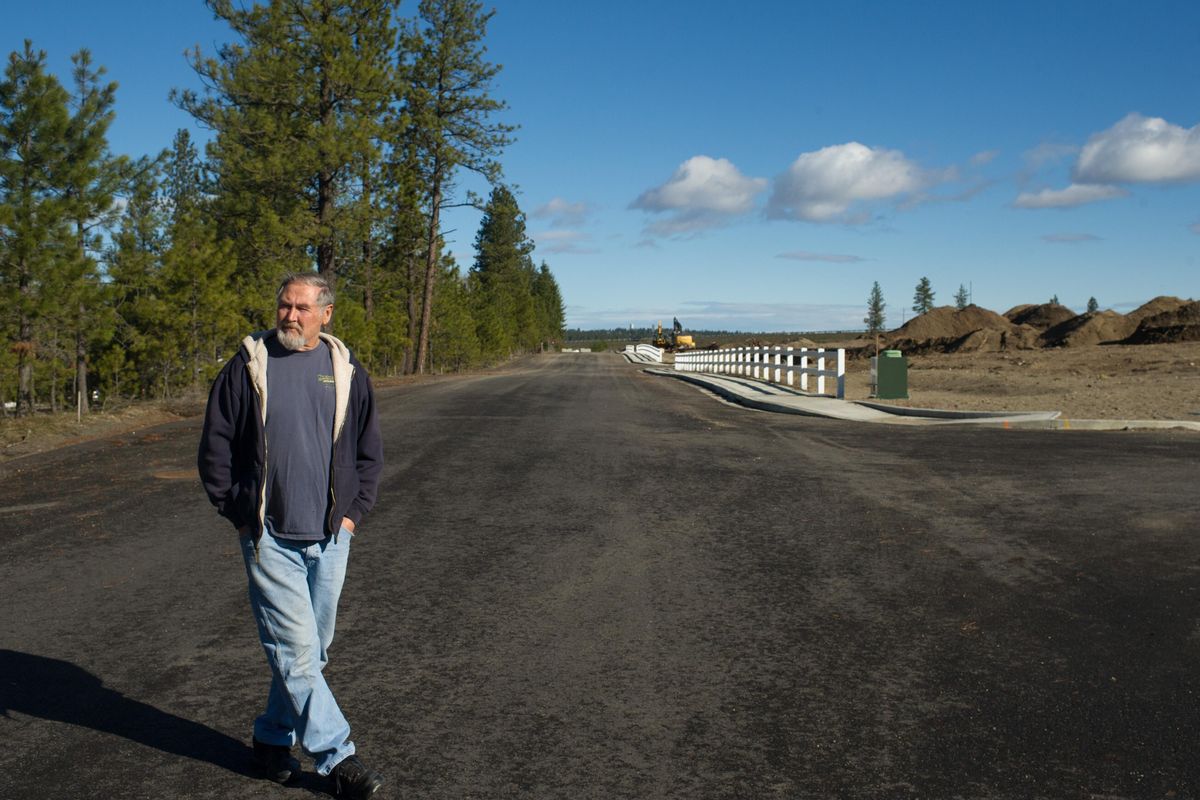Wandermere residents decry new housing developments

When Don and Carrie Lafferty built their home 34 years ago, they enjoyed opening their front door to a green panorama. Trees blanketed a long slope on the other side of their gravel road and the forest extended to the Wandermere Golf Course.
Nowadays, the Laffertys open their front door to mounds of dirt, walls of cinder block and the pulsing of heavy machinery. Dozens of duplexes and single-family homes are being built on the other side of their now-paved road.
The North Spokane Corridor cuts between their home and the golf course. And their neighbor’s house will be razed soon to make room for an apartment building.
“We thought we were coming to the country,” Carrie Lafferty said. “I liked to be out here because I don’t like the traffic, and I like to walk my dog without people around. All that’s going to change now.”
The Wandermere area just north of Spokane has seen immense growth since the Laffertys moved there. Now retired, they aren’t the only residents upset about all the construction.
In particular, neighbors have railed against Harlan Douglass’ Stone Horse development, which has replaced dozens of wooded acres with high-end duplexes and single-family homes. The final phase of construction will expand the 330-lot housing project west toward North Dakota Street, where the Laffertys live.
“It’s causing traffic and it’s making it unsafe for children,” said Jack Powell, an Air Force veteran who lives on Raptor Lane near the east end of the development.
Kody and Ambre Sturm, who live on East Center Road, also worry about increased traffic, as well as neighboring property values and the impact on wildlife in the area. And they question whether the nearby schools can handle a sudden influx of students.
The residents of North Dakota Street may be hit hardest by new developments. On one side of the road there is the Stone Horse project, and on the other, developer Steve Spadey plans to build 150 to 180 apartments on a 5-acre parcel.
“These are going to be a little higher-end than what you see in the area,” Spadey said, rattling off nearby amenities including restaurants, a grocery store and a movie theater. “We literally have everything within walking distance right there. It’s got a lot of potential for the guy who’s got a little more money.”
In 2010, Spokane County commissioners approved a rezoning of Spadey’s land to allow for the apartments, saying they would serve as a buffer between the spaced-out ranch homes and the jam-packed strip malls lining Division Street.
The Eastern Washington Growth Management Hearings Board attempted to block the rezoning, asserting that the county had ignored traffic studies and that the project would negatively alter the character of the neighborhood.
The county challenged the hearings board and won a favorable judgment from the state Supreme Court several years later. Spadey’s company, an investment group that owns the property, and about a dozen neighbors took part in the litigation.
Bob Watson, a retired Spokane fireman who lives on North Dakota Street, said a couple that lived two doors away sold their home because they feared the apartments would cause property values to plummet.
Watson said he lost a 6-foot strip of his front yard when county workers extended sewer lines to the apartment property. And he questions how his narrow, unmarked street could support both housing developments, especially in the winter when snow piles up on the sides.
“How do they expect to put all these cars through there?” he asked.
Spadey, the developer, said construction on the apartments should begin in about a year. The residents’ concerns, he said, are unfounded.
“All this development that’s going on will do nothing but increase property values,” he said. And, “the traffic has been taken into account – more than once.”